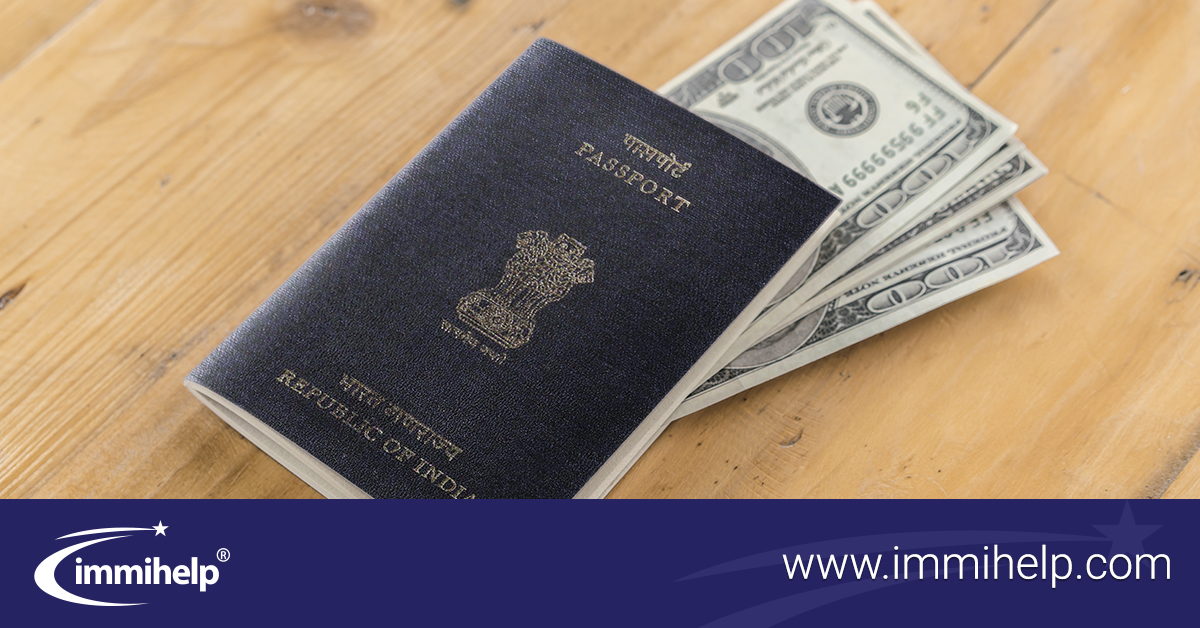The biometrics fee in the USA varies depending on the type of application and age of the applicant, but generally ranges from $85 to $170. American citizens applying for biometrics services are required to pay a fee of $85, while non-citizens might need to pay up to $170.
These fees cover the cost of collecting fingerprints, photographs, and signatures for identity verification. Biometric services play a crucial role in the immigration and naturalization process, as they help confirm the identity of applicants and prevent fraudulent activities. Understanding the associated costs is essential for anyone navigating the U.
S. Immigration system, ensuring they are prepared for the financial aspect of their application. By staying informed about biometrics fees, individuals can budget and plan accordingly, facilitating a smoother and more efficient process.

Credit: www.immihelp.com
Understanding Biometrics Process
Understanding the biometrics process is crucial for individuals seeking to understand the various aspects involved in the biometrics procedures. By delving into the biometric data collection and the purpose of biometrics in the USA, a clearer understanding of this essential process can be attained. Let’s explore the key components of the biometrics process below.
Biometric Data Collection
Biometric data collection is a fundamental aspect of the biometrics process. It involves the collection of unique physical or behavioral characteristics, such as fingerprints, facial recognition, iris scans, and voice patterns. This biometric data is used to uniquely identify individuals and authenticate their identity.
Purpose Of Biometrics In The Usa
The purpose of biometrics in the USA is multifold. It is utilized for various applications such as immigration, border control, law enforcement, and national security. Biometrics play a pivotal role in enhancing security measures, preventing identity fraud, and ensuring the accuracy of individual identification.
Current Biometrics Fee Structure In The Usa
The United States Citizenship and Immigration Services (USCIS) requires individuals applying for certain immigration-related benefits to undergo biometric services, including fingerprinting and photographing. The biometrics fee is a crucial aspect of the overall cost associated with immigration applications. Understanding the current biometrics fee structure in the USA can help applicants prepare financially for this necessary step in the immigration process.
Cost Breakdown For Biometric Services
Applicants need to be aware of the different components that make up the biometrics fee in the USA. The cost includes the expense of capturing biometric data, processing it, and conducting the necessary security checks. It is essential to understand the breakdown of these costs to have a clear picture of what the biometrics fee covers.
Application Fee Vs Biometric Fee
It’s important to differentiate between the application fee and the biometric fee. The application fee is paid to process the immigration application, while the biometric fee covers the cost of the biometric services. This distinction is crucial for applicants to understand the total expenses associated with their immigration process.
Factors Affecting Biometrics Fee
Biometrics fees in the USA can vary based on several factors. Understanding these factors can help individuals and businesses alike anticipate the costs involved in biometric data collection and processing. Let’s explore some of the key elements that affect the biometrics fee in the USA:
Agency Or Program Specific Requirements
The biometrics fee may differ depending on the agency or program specific requirements. Different agencies or programs may have varying levels of security needs, operational costs, and service demands, which can impact the overall biometrics fee.
Frequency Of Biometric Data Collection
The frequency at which biometric data collection is required can also impact the fee structure. More frequent collections may involve higher processing costs, leading to an increase in the biometric fee.
Payment Methods For Biometric Fees
When it comes to obtaining biometric services in the USA, it’s essential to be informed about the payment methods for biometric fees. Knowing the accepted payment modes and processing time for payment clearance can help streamline the process and avoid unnecessary delays.
Accepted Payment Modes
In order to pay the biometric fees in the USA, applicants can use the following payment modes:
- Credit Card: Visa, MasterCard, American Express, and Discover are commonly accepted credit cards for biometric fee payments.
- Debit Card: Major debit cards with Visa or MasterCard logo are also accepted for payment of biometric fees.
- Money Order: Applicants can also opt to pay with a US Postal Service money order. This method ensures secure payment without the need for a bank account.
Processing Time For Payment Clearance
The processing time for payment clearance varies depending on the payment method chosen:
- Credit/Debit Card: Payments made through a credit or debit card are usually processed immediately, allowing for prompt payment clearance and initiation of biometric services.
- Money Order: If the applicant chooses to pay using a money order, the processing time may take longer. This method typically requires 1-2 business days for payment clearance and initiation of biometric services.
Tips For Managing Biometric Fees
When it comes to managing biometric fees for immigration processes in the USA, it’s essential to understand the costs involved and how to effectively budget for them. Additionally, being aware of fee waivers and exemptions can help applicants save on expenses. To navigate these aspects successfully, here are some tips for managing biometric fees.
Budgeting For Biometric Expenses
Under the biometrics process, applicants are required to pay a fee for fingerprinting, photographing, and signature collection. The current biometric fee for most immigration-related applications is $85 per applicant. Understanding the significance of budgeting for these expenses is crucial to avoid financial strain during the application process.
Understanding Fee Waivers And Exemptions
For individuals experiencing financial hardship, fee waivers may be available to exempt them from paying the biometric fee. Generally, those receiving means-tested benefits or demonstrating financial hardship may be eligible for a fee waiver. It’s important to review the eligibility criteria and provide proper documentation to support the waiver request.
Frequently Asked Questions On How Much Is Biometrics Fee In Usa?
How Much Is The Biometric Check Fee?
The biometric check fee varies, may cost between $50 to $100. It depends on the service provider and type of biometric check.
How Much Does Uscis Charge For Fingerprints?
USCIS charges $85 for fingerprinting. It’s a required fee for most immigration applications.
How Do I Pay My Uscis Biometrics Fee?
You can pay your USCIS biometrics fee online using a credit or debit card. Just visit the USCIS website and follow the instructions to complete the payment process.
Is There A Fee For Biometrics For Work Permit?
Yes, there is a fee for biometrics when applying for a work permit.
Conclusion
Understanding the costs of biometric fees in the USA is crucial for individuals applying for various immigration services. By delving into the specific charges and factors affecting the fees, applicants can make informed decisions regarding their financial obligations. Staying informed about these costs is essential for a smooth immigration process.

